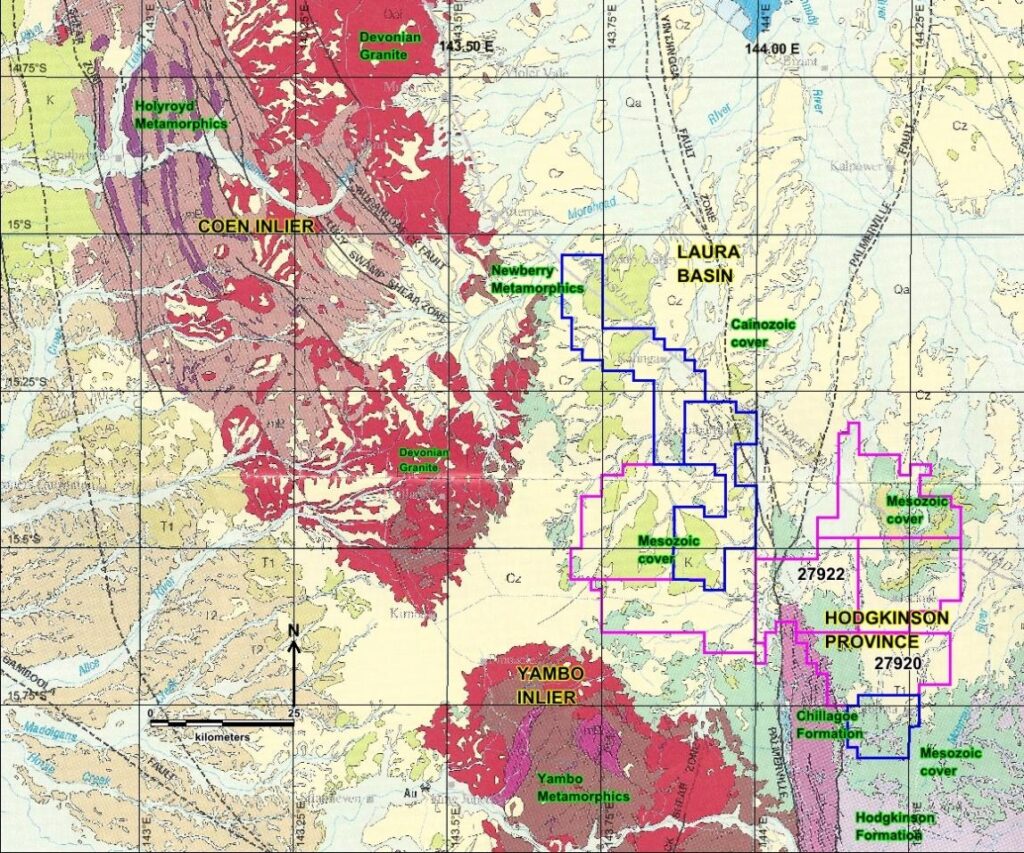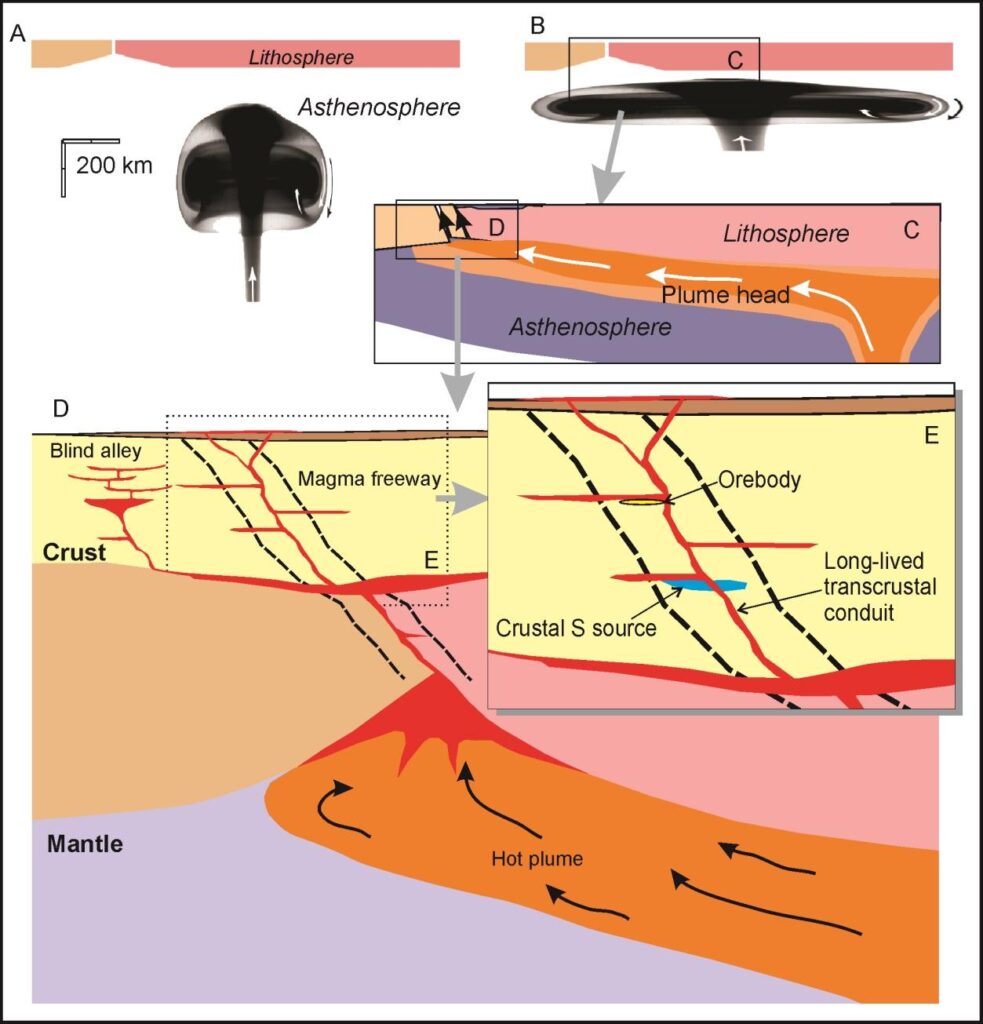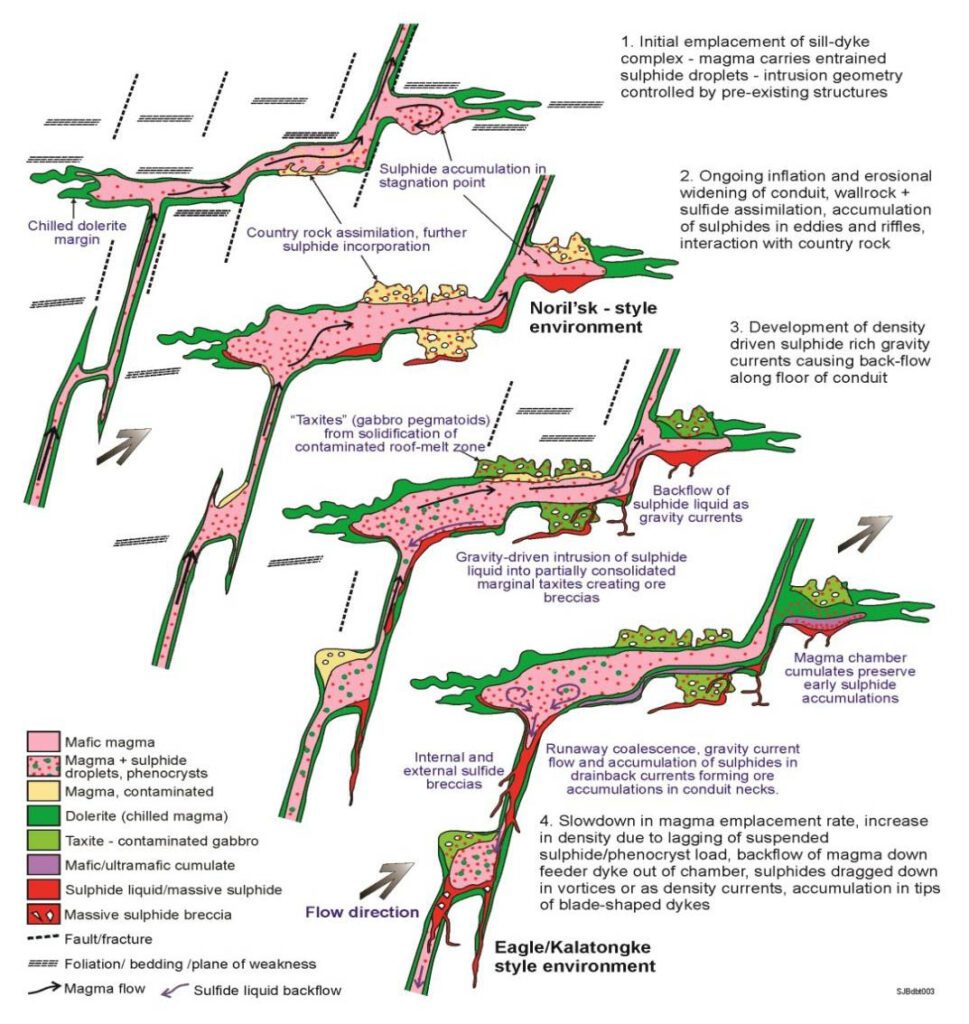Geological Origins
Rhumb Resources was the first to recognise the intracontinental Rift System – a major bifurcation of the Yintjingga Fault and the Palmerville Fault and the first to discover the continental flood basalt system associated with a NE trending fault that splays off the rift system.
The company is fortunate in acquiring tenements that cover most of the southern rift and associated structures only limited by the national park to the north and west. Currently the company controls more than 2200 square kilometres under nine separate exploration applications that will enable a complete assessment of the system.

The company has identified 30 volcanic vents along the margins of this NE structure that was overlooked by previous explorers nor mapped or documented by GSQ or GSA. The flood basalt system outcrops for more than 40km (possibly up to 110km under cover) partially overlain by Cainozoic sediments and is visible on Google Earth. The flood basalt system represents a major part of the overall system – an “open system”.

Rhumb believes the mafic/ultramafic intrusives to be Triassic in age and have intruded late Permian Coal Measures within the Laura basin giving a sulphur source for the intruding mafic and ultramafic melts as xenoliths amalgamating with the PGE’s allowing the PGE rich sulphides to accumulate in suitable trap sites as magmatic sulphide bodies.
It is interpreted that there was a further subsidence due to a back arc extensional event that led to the downward slumping of the Laura/Lakefield Basins during the early Permian, a later compressional event during the late Permian/early Triassic and a larger rifting event during the mid Triassic followed by a further subsidence/slumping during the early Jurassic.
The subsequent rapid erosion of the Devonian and Permian sediments and Triassic PGE rich intrusives were then eroded and deposited in the basin as coarse lacustrine basal conglomerate units during the early Jurassic which was then subsequently deposited with finer sediments as the gradient and energy flow at the edges of the basin reduced. Extensive erosion of the Jurassic sediments has exposed the basal conglomerates thereby shedding platinum and palladium into modern day drainages.

The roadside work the Company conducted pre-tenement grant indicates a significant mineralised system exists in relation to the rift architecture with platinum grades at surface exceeding >10,000 PPB (>10 grams per tonne Pt). MMI pathfinder elements such as Cu, Co, Ni, Sc faithfully outline structural pathways and potential buried intrusives systems.
A number of challenges lie ahead but a detailed strategy has been developed in accordance with the information collated and a very experienced exploration team has been formed to expedite a significant discovery.
